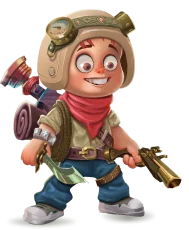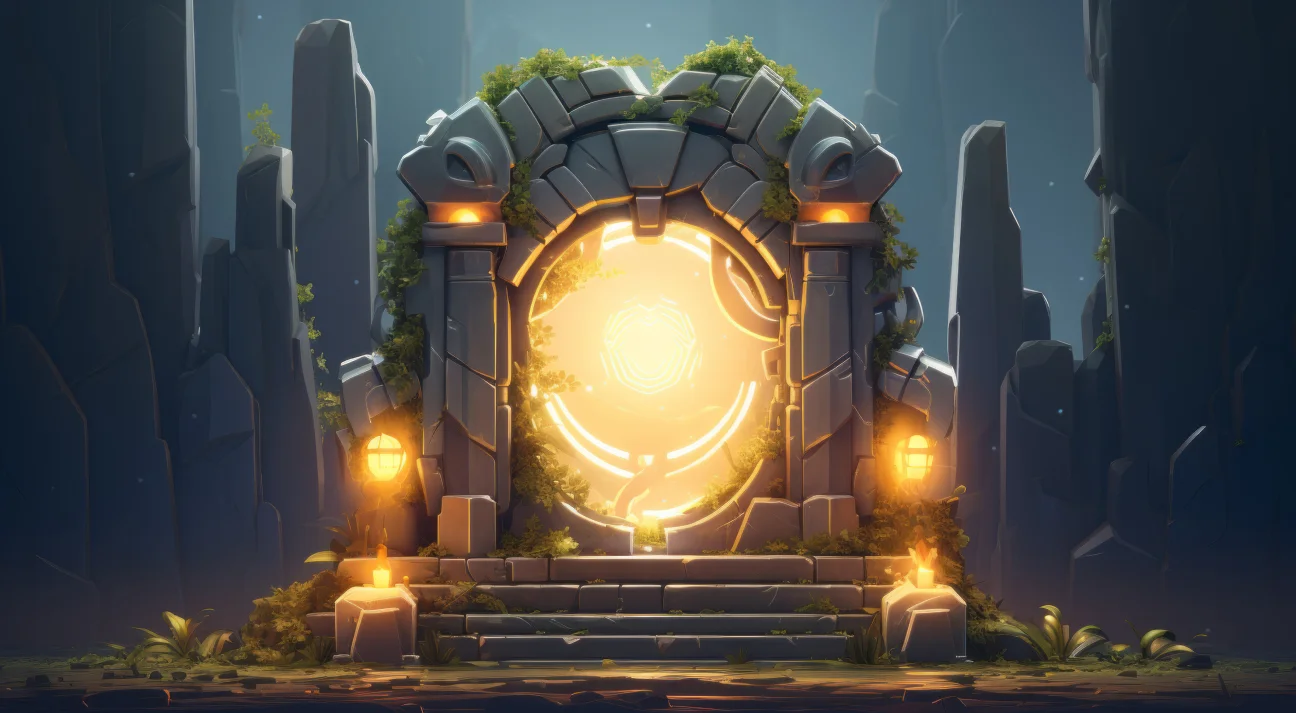
Hiring the Right Game Artist: A Comprehensive Guide
Game art is an indispensable component of game development, contributing to player enjoyment, emotional connection, and the overall success of a game, making hiring game artists essential. This blog post will provide you with insights into considerations to make when hiring a game artist.
Game art is integral to a game’s identity and substantially contributes to its success. Whether it’s Minecraft’s iconic pixelated art style, Fortnite’s colorful and cartoony aesthetic, or the augmented reality (AR) elements of Pokémon GO that overlay virtual creatures onto real-world locations, blending the virtual and physical worlds seamlessly.
Apart from game mechanics, the game art sets the tone and atmosphere of the gameplay, creating an immersive experience for players. From iconic characters to environments that leave a lasting impact on players’ impressions, all such aspects of game art contribute to the overall storytelling of the game.
Therefore, making a game artist a crucial investment when developing a game is essential. This leads game development companies or studios to hunt for a game artist capable of providing game art design services that align their vision with creativity.
Finding a ‘best-fit’ game artist is crucial as selecting the right match ensures a successful game development project without facing significant costs or consequences. To help you dodge mistakes when outsourcing the game artist for a reputed game development studio, here is a guide to assist you with how to hire a game artist.
- Establish Clear Requirements and Expectations
- Understanding the Various Types of Game Artists
- Game Artists by Art Style
- Game Artists by Game Assets
- Game Artists by Specialization
- Game Artists by Gaming Platform
- In-house or Outsourced Game Artists?
- Achieve Your Creative Game Vision with 300Mind’s Game Artists
Establish Clear Requirements and Expectations
Imagine strolling through a grocery store without having a list or giving any thought to what you want to buy. You will end up picking up items on a whim, only to later realize you’ve bought things you don’t really need. Turns out, you’re paying a bill that could have been lower, or it might include the items you actually needed.
Defining precise requirements, such as skills (creative perspective, ability to create high-quality assets, etc.), experience (number of years in the industry, portfolio, etc.), artistic styles (realistic, cartoonish, pixel art, anime/manga, or stylized), tools (Photoshop, Illustrator, Blender, Maya, 3ds Max), and other specializations (understanding of specific requirements for game genres, ability to collaborate with other team members, etc.) you’re seeking in a game artist, is crucial.
Metaphorically, it acts as your “shopping list,” guiding your search and ensuring that you’re targeting candidates best fit for your project and aligned with your needs and preferences.
Furthermore, it’s essential to set realistic expectations from the get-go. It involves being transparent about the project timeline, milestones, communication, and the level of involvement you expect from the artist, among other factors. By doing so, everyone involved is on the same page, fostering a smoother collaboration process.
This leads us to one of the most important requirements that game companies or studios must consider when looking for video game artists for hire.
Understanding the Various Types of Game Artists
A game comprises many aspects such as characters, environment, props, art styles, interface design, player experience, and more. Consider hiring a game artist depending on the specialization you are looking for in any of these aspects.
Let us understand it in detail further. Here is a segregation of game artists based on various types of game aspects:
Game Artists by Art Style
Games are predominantly characterized by the visual elements of the art styles used to achieve the overall look. For example, the game ‘The Legend of Zelda‘ offers an immersive gaming experience with 3D art styles, while ‘Owlboy’ stands out as a modern masterpiece in 2D Pixel Art games.
This difference highlights the importance of considering a game’s art style when hiring a video game artist.
2D Artist
If your next project is a 2D art-styled game or your 3D game project needs some 2D aspect in its design, hiring a 2D artist is a critical next step. These specialized art creators have hands-on experience in techniques such as digital painting, pixel art, vector graphics, and more.
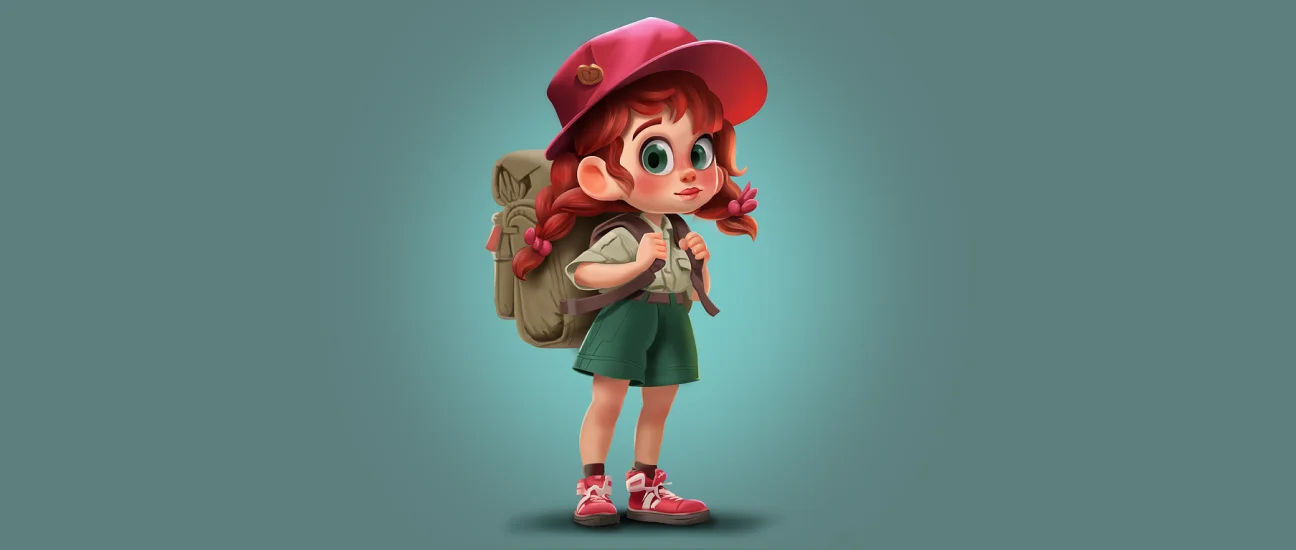
Source: Enchanted Scout – Evie by 300Mind
When outsourcing artists from a 2D game art design company you must consider the following skills:
- Consider the artist’s level of experience in creating 2D game art.
- Proficiency with relevant software tools used to create 2D art such as Adobe Photoshop and Illustrator.
For more insights into creating desirable 2D game art, check out “How to create desirable 2D game art“.
3D Artist
Three-dimensional artwork is all about details and a visual perspective of high-detail models from various angles. Apart from an artist’s creative edge, it also demands technical know-how to create models like the one shown in the picture below.

Source: 3D Wood Architecture by 300Mind
Here are the specifications to look for when hiring a 3D artist for your game idea:
- Expertise in 3D modeling, texturing, rigging, animation, and rendering techniques
- Proficiency in using industry-standard software like Maya, Blender, or 3DS Max along with knowledge of Unity or Unreal Engine.
- Knowledge of sculpting software such as ZBrush or Mudbox
- Strong understanding of anatomy, lighting, and composition
Also Read: Types of 3D game art style: how to choose the right one
Game Artists by Game Assets
Game assets play a multifaceted role in shaping the player experience, driving engagement, conveying storytelling elements, and contributing to the overall success and longevity of a game.
Thus, high-quality and well-designed game assets become essential to offer players immersive gaming experiences, making hiring an artist with specialization in designing various game assets a good investment.
Character artist
Characters, from the protagonist to other in-game characters with various traits (fighters, summoners, wizards, hunters, jack of all trades, etc.), play a crucial role in bringing out different plots in the storyline. The artist who brings the sketches of these characters to life plays a more significant role in the success of these characters.
To hire a character artist who possesses the necessary skills, consider making sure that the artist demonstrates proficiency in the following aspects:
- Solid understanding of human anatomy, proportions, and gesture
- Understanding how characters move and animate
- Skilled in texturing techniques to create lifelike skin, clothing, and accessories
- Experience in 2D concept art and 3D modeling, texturing, shading, rigging, and animation
- Knowledge of texturing software like Substance Painter or Photoshop
- Proficient in using 3D modeling software like Maya, Blender, or ZBrush
Also Read: The Ultimate Game Character Design Guide
Environment artist
From rocky terrain to arid landscapes, from water with underwater ecosystems to open grasslands, from factories and warehouses to cities with skyscrapers, and from enchanted woods to Renaissance-era architecture, these are some of the game environments used by game developers to immerse players in diverse and engaging worlds. Each of these environments comes with its set of challenges when crafting the artwork.
A skilled environment artist can play a crucial role in bringing your game world to life through their game environment modeling skills. They are capable of designing landscapes that evoke specific moods, themes, and atmospheres. Apart from having experience in using software, they pay close attention to detail, whether it’s adding realistic textures to surfaces, creating convincing lighting effects, or adding small props and details that bring the environment to life.
Prop artist
Props add a believability factor to the gaming environment and shape the overall experience of the game. As a result, it is essential to focus on their ability to create detailed and immersive objects, including furniture, weapons, tools, vehicles, and other items.
Further, the artist must be able to add intricate details and realistic textures. The artist must also be skilled in creating props in various styles, genres, and periods. Further, it is also a requirement for an artist to maintain consistency in style, scale, and quality across all props.
Weapon artist
The presence of weapons in-game makes the gameplay more functional and impactful. It’s the weapon artist who creates a variety of weapons, including melee weapons, firearms, explosives, and futuristic or fantasy-themed weapons. However, there are a lot of aspects to look into when it comes to hiring a weapon artist to create weapons like the one shown in the image below.
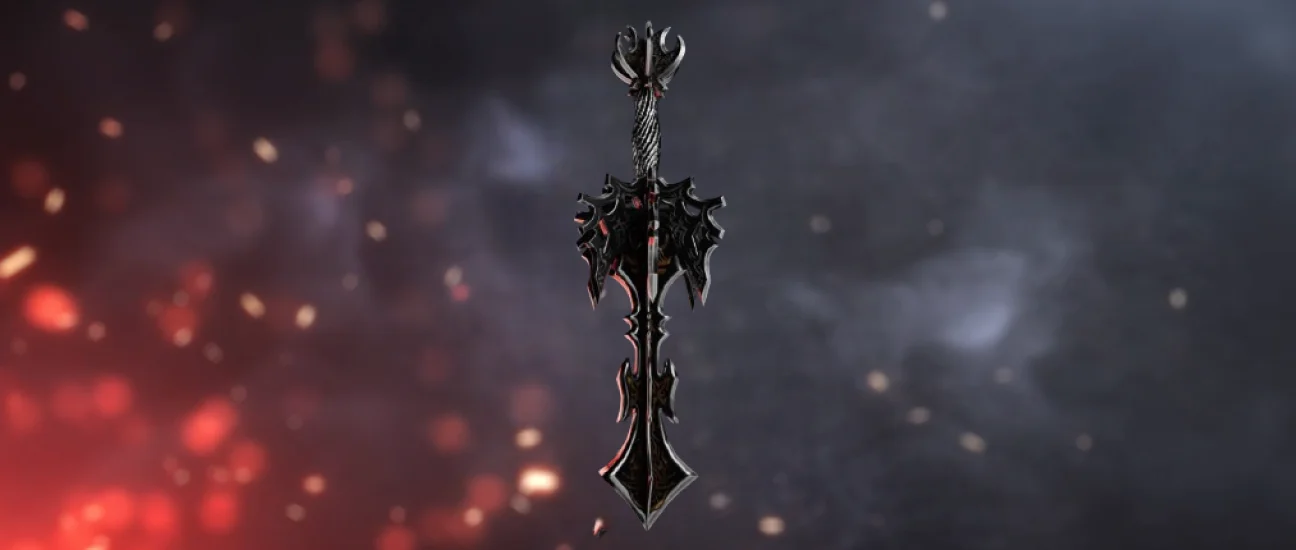
Source: Spectral Guardian Pernach by 300Mind
One crucial aspect is the ability to create weapons that are realistic and authentic, with attention to detail in terms of anatomy, mechanics, and materials. It’s also essential to consider the artist’s understanding of weapon functionality and ergonomics. The artist must also have an understanding of how weapons are held, fired, reloaded, and interacted with in real-life scenarios.
Must Read: How to Design Iconic Video Game Weapons and Equipment?

Game Artists by Specialization
To address specific aspects of the visual element, hiring a game artist by specialization is essential for creating cohesive and compelling game worlds. Here are some specifications to consider for hiring a video game artist.
Concept artist
Concept artists are responsible for visually conceptualizing ideas, themes, and concepts proposed by game designers and art directors. They translate abstract concepts and design briefs into tangible visual elements.
When hiring a concept artist for game development, it’s essential to focus on their ability to visually conceptualize ideas and translate them into compelling artwork. They must be able to convey narrative elements and mood through their concept art. Proficiency in using digital painting software like Adobe Photoshop or Procreate for concept art creation is required.
Technical artist
These artists act as a bridge between art and technology to ensure the technical efficiency of the visually stunning game elements by integrating them into the software. When hiring a technical artist, the first thing to make sure of is if they have a deep understanding of the technical aspects of game development, including rendering pipelines, shaders, optimization techniques, and content creation workflows.
They are likely to have a strong foundation in scripting and programming languages. They should be able to optimize rendering performance, implement visual effects, and ensure consistency in the game’s visual style across different platforms and hardware configurations.
Motion graphics artist
Games are useless with just static visual elements, which is when the motion graphics artist steps in to add dynamic animations and make game visuals more immersive. When you hire motion graphics designers, make sure they excel in creating fluid and expressive animations for characters, objects, and special effects.
Look for someone who specializes in creating animated elements such as UI animations, HUD elements, logo animations, transitions, and visual effects. They should have experience working with motion graphics software like Maya, Adobe Animate, or Cinema 4D. Last but not least, they should also have knowledge of file formats, compression techniques, and optimization for real-time rendering.
Animation artist
Animation artists make the characters move, emote, and interact with the game world. They convey personality, emotions, and behavior through movement, enhancing the player’s connection to the characters and the game’s narrative through 3D game animation.
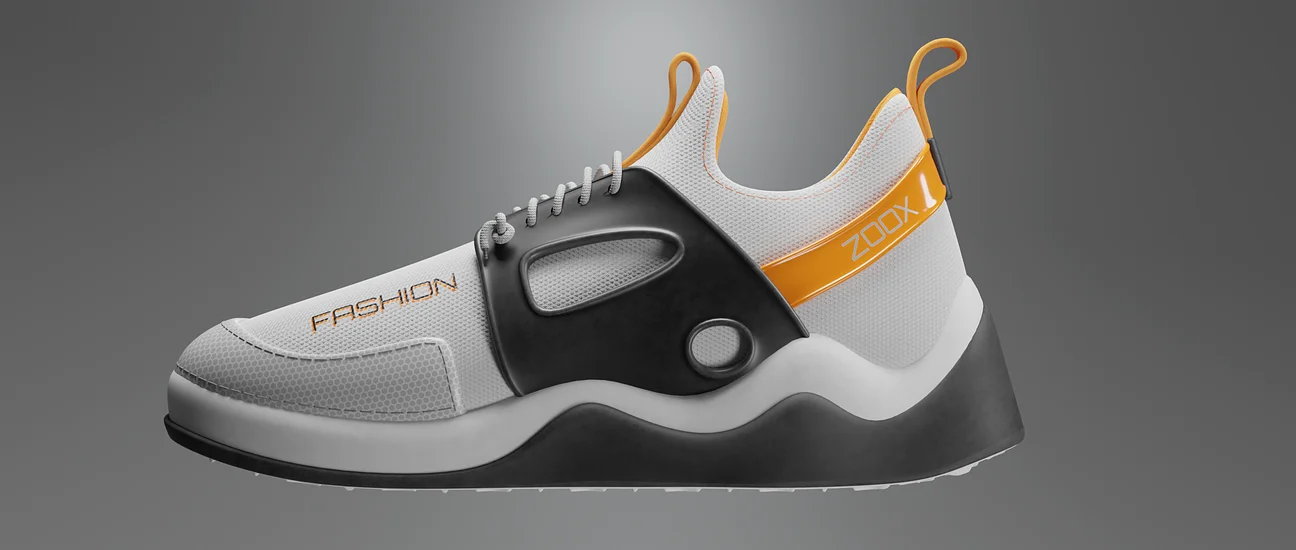
Source: 3D Shoe Animation by 300Mind
When hiring an animation artist, look for one who excels in character animation, including movements such as walking, running, jumping, attacking, and interacting with the environment. Animation artists should be proficient in creating dynamic combat and action sequences, including melee combat, ranged attacks, spellcasting, and special abilities. Apart from being proficient in animation software, they should be able to create convincing and expressive creature animations.
Game Artists by Gaming Platform
Gaming platforms play a crucial role in the success of any game development idea. This leads us to our next consideration when choosing the type of video game artist for hire. Here are some gaming platforms and the skill requirements for designing game assets for them.
Mobile
When it comes to mobile game development, crafting characters and environments that engage players on smaller screens with touch controls can be a daunting task for artists. Therefore, if you are developing a game for mobile devices, it’s crucial to prioritize hiring an artist with extensive experience designing mobile game visual assets specifically tailored for mobile platforms.
This expertise ensures that the artwork is optimized for mobile screens and enhances the overall gaming experience for players.
Web
Designing a game art style optimized for browser-based gaming experiences poses its unique challenges.
Game artists(not necessarily proficient in coding) bring valuable experience in crafting artwork that seamlessly adapts to various browsers and web devices, allowing them to skillfully optimize characters, environments, and other visual elements for optimal performance and user experience.
PC
PC games have a market size of approximately 29.16 billion, making them one of the substantial contributors to the revenue generated by games across devices. A professional PC game development company leverages its expertise in designing visually stunning and high-performance games tailored to various hardware capabilities and PC configurations.
Unlike the previous categories of devices, the asset designs are more intricate, and the environments are more immersive. This understanding allows them to create visually stunning assets optimized for high resolutions and powerful hardware, including detailed character models and dynamic visual effects, ensuring a captivating gaming experience for PC players.
Console
When it comes to player experience, console games offer the most engaging experiences. The artists and game designers play a significant role in achieving this by incorporating lifelike character animations, breathtaking visual effects, dynamic environments, and more.
Console game artists excel in aligning their artistic vision with the technical requirements and gameplay objectives inherent in creating immersive gaming experiences. They possess expertise in using tools like Blender, Maya, and more, coupled with the technical knowledge necessary to create assets optimized for console platforms such as PlayStation, Xbox, and Nintendo Switch.
AR/VR/MR
When developing a game for AR/VR/MR platforms, the way players interact with the visual elements differs significantly from conventional gaming platforms.
The game artist’s skills must include proficiency in spatial design, 3D modeling, motion capture, shader programming, and animation techniques to create captivating virtual environments and lifelike characters. They must also have experience using software like Unity or Unreal Engine.
In-house or Outsourced Game Artists?
This dilemma is something that every game company faces when they are in the hunt for game artists. Each of the above alternatives has its own perks.
With in-house artists, you have direct control over the creative process and can easily communicate and collaborate with them on a daily basis. It leads to smoother workflows, better coordination, and a stronger sense of ownership over the project. Furthermore, these artists are bound by company policies and confidentiality agreements, reducing the risk of leaks or breaches of sensitive information.
On the other hand, outsourcing game artists can be more cost-effective, especially for smaller studios or projects with limited budgets. It allows you to access a global talent pool and choose artists with the right skills and experience at competitive rates. Additionally, there is flexibility in scaling up or down the team based on project requirements. Lastly, outsourcing can lead to faster turnaround times, particularly for tasks that require a large volume of work or tight deadlines.
Ultimately, the decision between in-house or outsourced game artists depends on your project’s unique requirements, budget, resources, timeline, and objectives.
Must Read: Key Factors to Consider When Outsourcing Your Game Art Project

Achieve Your Creative Game Vision with 300Mind’s Game Artists
Are you in search of an unparalleled creative perspective to elevate your game development project to new heights? Look no further than 300Mind’s elite team of game artists, where creativity meets excellence.
At 300Mind, we understand the pivotal role that game artistry plays in shaping the immersive experiences players crave. Our talented team of artists specializes in various aspects of game development, including character design, environment art, UI/UX design, animation, and more.
With our expertise and creativity, we’ll help bring your game vision to life with stunning visuals and immersive experiences. Let’s collaborate to make your game stand out in the crowded gaming market.
Before availing 2D or 3D game art services from any artist, you must look for proficiency in software tools like Maya or Blender, a strong portfolio demonstrating artistic skills and creativity, the ability to collaborate with a team, attention to detail, an understanding of game design principles, experience working on successful game projects, and flexibility in adapting to different art styles.
A game designer creates a game concept comprising of the rules, mechanics, and gameplay experience, while a game artist focuses on creating(starting with sketches or drawings) visual elements such as characters and environments.
Here’s a quick checklist for hiring the right game artist for your next project: Define your project needs, review portfolios, verify experience with relevant software tools, consider budget, assess communication skills, check ability and availability to collaborate remotely, ensure alignment with project requirements and artistic style, negotiate terms, look for a flexible engagement model, and finalize the contract.
